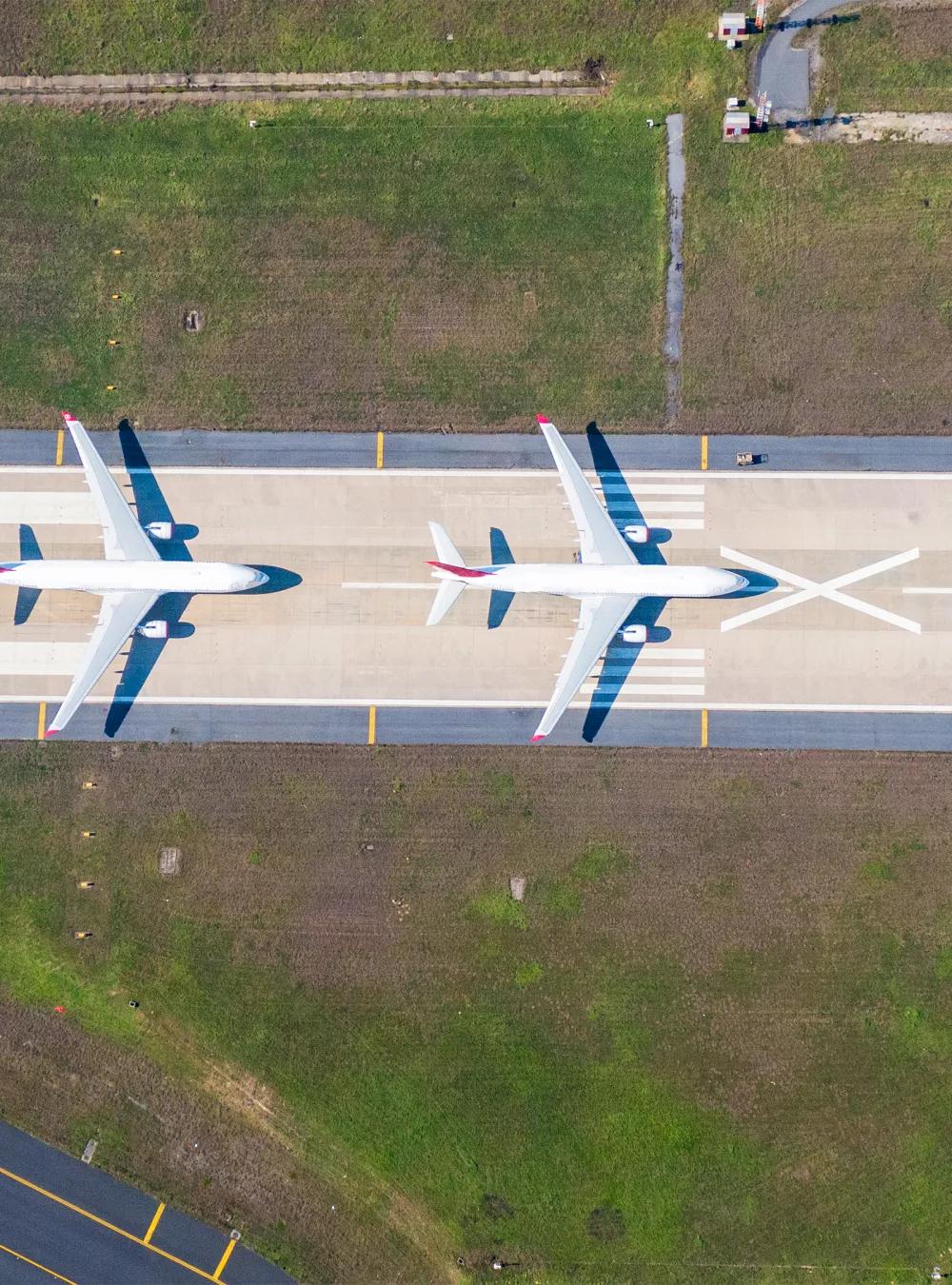Air traffic management is about more than planes in the air. Preventing backups on the airport surface is part of the job too. A first-of-its kind MITRE tool gives managers earlier awareness of developing issues—so they can keep traffic flowing smoothly.

Stopping Airport Gridlock in Its Tracks—with AI Modeling
If you’ve sat on an airport taxiway longer than expected, this might sound familiar to you.
“When weather conditions—such as summer thunderstorms—occur at a busy airport with limited tarmac space, it can cause significant delays to both arrivals and departures,” says MITRE’s Alex Tien, Ph.D. “And that can quickly lead to surface gridlock.”
Tien is more than familiar with this situation. That’s why he and his team are working to get ahead of the problem.
As he notes, gridlock isn’t limited to city streets. It can and does happen on airport surfaces as well. And when it does, it can cause delays across the airspace system. Planes destined for the gridlocked airport may have to delay their departures. Aircraft in flight might be put in holding patterns while the surface congestion is cleared—or even diverted to other airports.
To help prevent such system disruptions, MITRE researchers in the Center for Advanced Aviation System Development—the federally funded R&D center we operate for the Federal Aviation Administration (FAA)—used artificial intelligence (AI) and machine learning (ML) capabilities to create a tool that identifies precursors to the events that cause them. It can then issue alerts to traffic managers so they can take corrective action before the effects of gridlock ripple across the system.
Now in the testing stage, this research is the first human-AI teaming effort conducted for traffic flow management.
The predictions helped bolster traffic managers’ confidence that prompt action was needed to avoid more serious issues.
AI Gives Air Traffic Managers a Leg Up
Right now, air traffic managers must monitor a variety of data sources to gather information about the system’s current state. They then use the information—and their years of experience—to mentally calculate what the system might look like in the near term and anticipate problems.
“Our tool does a lot of the work for them,” says Tien, who leads the effort. The tool uses AI and ML to ingest real-time operational data and continuously predict airport taxi-time performance up to two hours in the future.
“AI/ML models excel at generating the probability of likely outcomes,” Tien explains. “Since lengthy taxi-out times are often the early signal of future surface gridlock, we programmed the tool to use historical data and predictive capabilities to watch for precursors and issue alerts.”
Take that summer thunderstorm and its potential impact on surface conditions. By issuing alerts of what the system might look like in two hours, the MITRE tool gives air traffic managers the advance notice they need to take action to prevent the predicted congestion.
FAA Feedback on Testing Yields Promising Results
MITRE provided the demonstration capability to users at the FAA’s Air Traffic Control System Command Center in summer 2022 to evaluate how it could support decision making.
“We used the capability to make predictions and support users’ responses in real time,” Tien says, “and the feedback was very encouraging.”
On several occasions, the test users responded to the tool’s alerts by calling air traffic management facilities to plan traffic management actions. For example, a response might include slowing down arrival traffic to give an increasingly congested airport more time to dissipate the departure traffic on its surface.
“The predictions helped bolster the traffic managers’ confidence that prompt action was needed to avoid more serious issues,” Tien says. “They also found, in most cases, the predictions correlated well with data from other automation tools—and with what they observed as events unfolded.”
While more testing will be needed before the capability is ready for the field, Tien is confident the AI/ML model will play an important role in the future of air traffic management.
“I think we’ve already shown that the AI-enabled models are promising in terms of their ability to learn from data and produce predictive information very quickly. As AI rapidly evolves, the promise only expands.”
Join our diverse community of innovators, learners, knowledge-sharers, and risk takers. View our Job Openings.